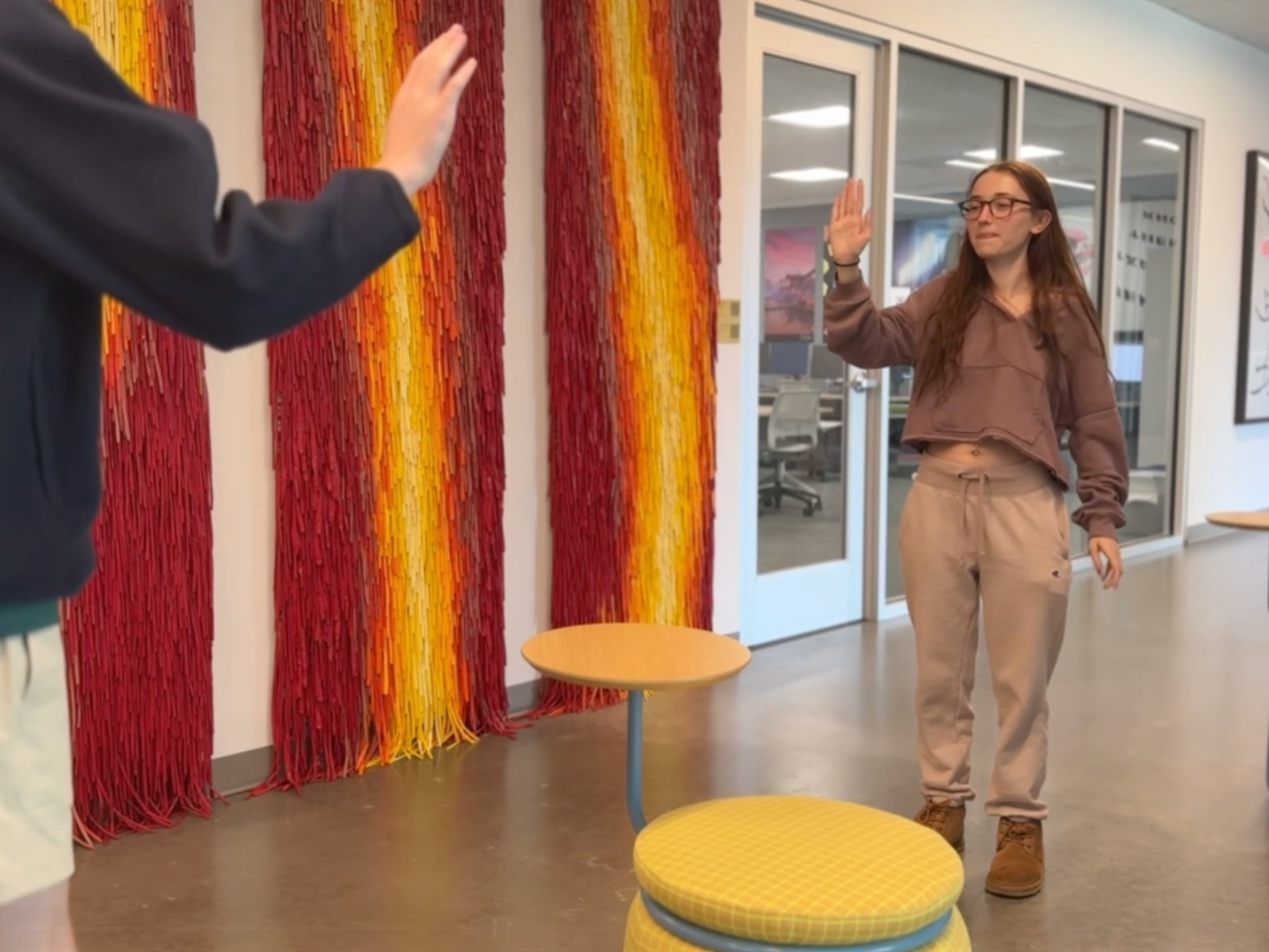Course Description
This conceptual design course explores the dynamic and rapidly evolving field of extended reality (XR), encompassing immersive technologies that blend virtual, augmented, and mixed reality experiences (VR, AR, MR). Extended reality transcends traditional boundaries, offering innovative ways to interact with and perceive the world around us. Students will explore XR comprehensively, delving into theoretical foundations, practical applications, and potential societal impacts. Through theoretical lectures, project-based learning, and class activities, students will gain a deep understanding of XR's diverse components and capabilities. Students are encouraged to explore personal interests, apply the knowledge and skills gained from previous courses, and continue developing their visual language under developing technologies and emerging contexts.
Above all, this course is about having the energy to experiment and create a safe space to make mistakes.
Project Description
Three tutorial workshops will be conducted each week. These follow-along tutorials introduce the XR concept, the technical experimentation workflow, the software, and the basic requirements for a solid beginner foundation in the technology.
Using the tutorials from each workshop, students are challenged to extend, enhance, customize, or create something entirely new. This includes creating new animations, content, 3D models, sounds, and more.
• Augmented Reality - Adobe Aero
• Virtual Reality - AFrame.io + Glitch
• Mixed Reality (Physical Computing) - Circuit Playground + Google Teachable Machine
Course Learning Outcomes
• By the end of this course, the student will be able to describe the different theories and ethical challenges posed by extended reality technologies and applications. (5)
• By the end of this course, the student will be able to apply their knowledge of discipline-specific practices and techniques in immersive interactive applications. (1)
• By the end of this course, the student will be able to critique and discuss the differences between AR, VR, and MR. (3)
• By the end of this course, the student will be able to determine the most adequate approach to solving problems or achieving goals using extended reality applications. (4)
• By the end of this course, the student will be able to demonstrate the ability to create interactive extended reality applications that convey complex information, original ideas, or narratives. (6)
Deliverables
• Each student was to submit any number of videos and screenshots demonstrating their experiment or failure every week for three weeks.
Reflections
The workshops and experiments were enjoyable and engaging. However, not owning a Quest 3 made designing a VR workshop specifically focused on the device within such a short timeframe was challenging. This led to the decision to use A-Frame and Glitch for the workshop. Unfortunately, this approach revealed a recurring issue: most students, if not all, experienced a fair amount of anxiety working with code. While students were expected to have prior exposure to web design or familiarity with HTML, CSS, and JavaScript, this exposure was not a prerequisite. As a result, the A-Frame and Glitch framework was simplified with pre-written code, demonstrating various ways to customize and change aspects of the sketches.
Silver Chalice, VR Experiment
A-Frame & Glitch
Max Alvarez
Mixed Reality Experiment
Adobe Aero, Circuit Python, Video
Nico Bakh
Augmented Business Card
Adobe Aero
Nico Bakh
VR Game Concept
A-Frame & Glitch
Elijah Li
Spaceman in VR
A-Frame & Glitch
Max Alvarez
VR Game Concept
A-Frame & Glitch
Max Alvarez
Augmented Reality Concepts
Adobe Aero
Leilani Luu
Object Detection Experiments
Google Teachable Machine









